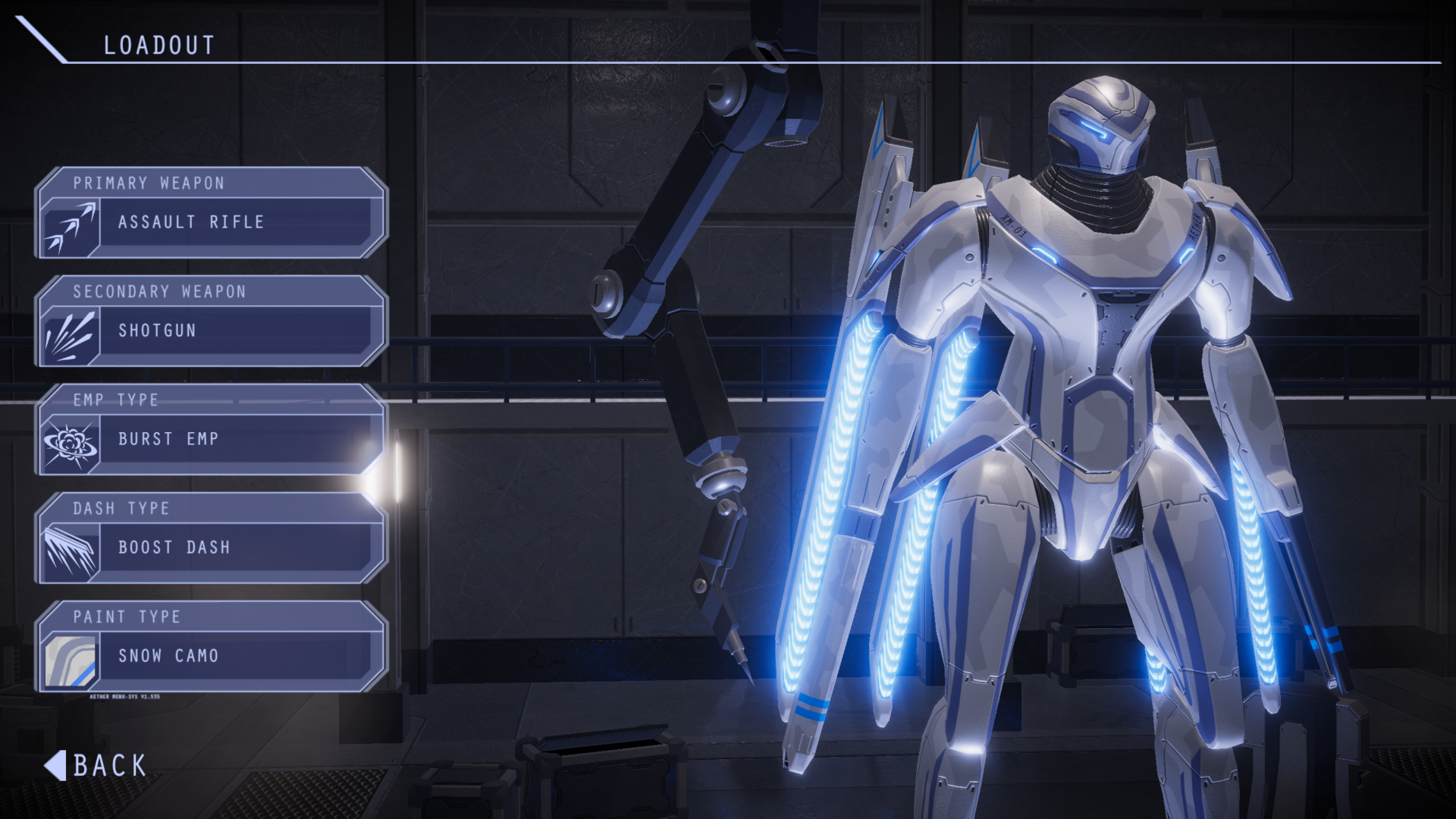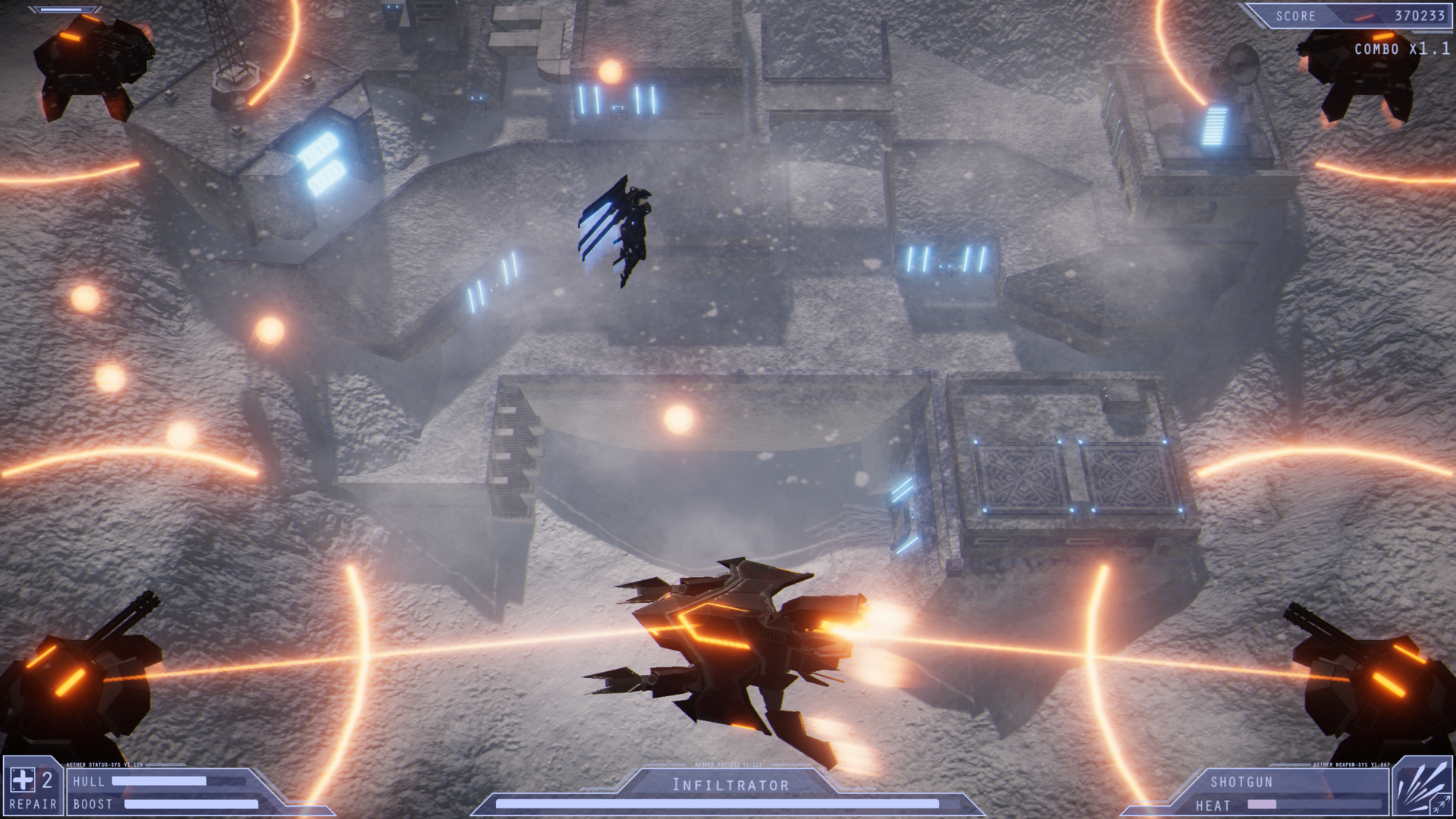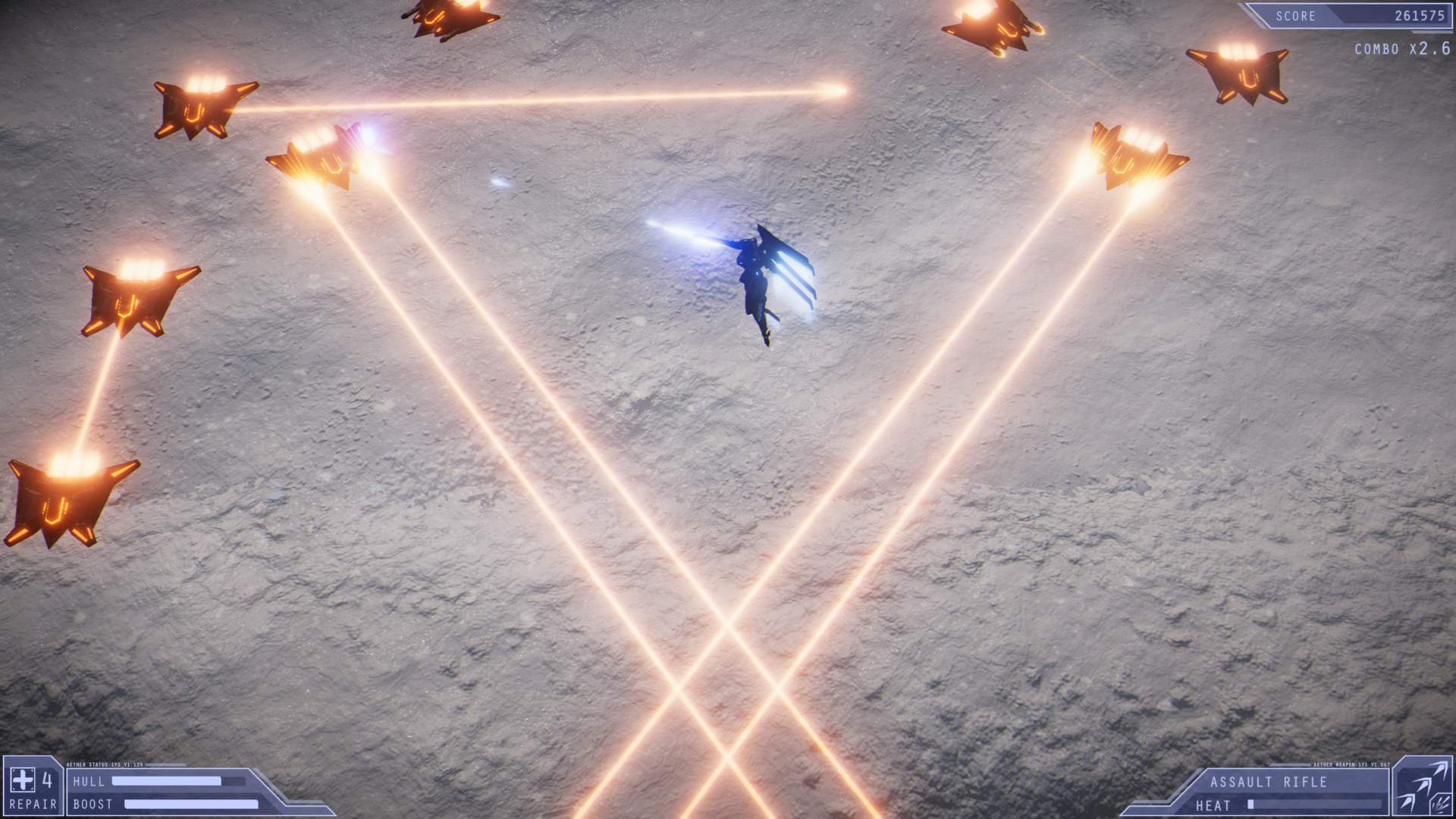A twin-stick shooter that doesn’t differ from the crowd
Type: Singleplayer
Genre: Action
Developer: Sleepy Spider Studios
Publisher: Sleepy Spider Studios
Release Date: 24 Feb, 2020


Overview
Project AETHER: First Contact is a twin-stick shooter set in space, where the player controls a mech suit in order to defend the human race from an alien invasion. The game is divided into nine different stages, with each stage having a final boss and the possibility to play it at different difficulties to earn higher scores (and achievements). The game, as we’ll see, doesn’t have any major problems, but also nothing to make it different from the multitude of twin-stick shooter games out there.
Shotgun or railgun?
Before each mission, the mech can be customized with a range of weapons and abilities, as long as they have already been unlocked. These weapons are pretty standard for the kind of game: rifle, shotgun, railgun and so on… While the game doesn’t propose anything too fancy, it allows us to take two weapons with us in each level, pretty much defining the way we are going to play that level: a railgun or an assault rifle allow you to play safer, longer distances, while a shotgun is more reckless but also much more powerful in terms of destruction.

The mech suit also has a special ability: this comes from the fact that shooting our opponents creates a magnetic field around them, which can be used at our advantage by overloading it, destroying the enemy ship and granting an additional effect corresponding to the chosen ability. The last ability changes the dash, which allows us to pass through bullets unarmed: these are smaller variations, but can be interesting for different playstiles on different loadouts. A different kind of weapons is the energy blade, which allows the suit to make melee attacks, which in turn can push enemies around the screen, but usually falls short on usefulness due to the very high probability of getting hit by the bullets the enemy we’re attacking could shoot.
Standard issue
Apart from the initial loadout, the game is just a standard-issue twin-stick shooter set in space (or planetary low orbit). All levels follow the same pattern: a tons of the same enemy ships for the 90% of the level, followed by a final stage boss. Talking of enemies, there is a good variety of them, as they range from basic-shooting ships to more advanced dashing-melee or laser ones, with a good amount of tougher, medium-size enemies.

Bosses, as I already said, always appear at the end of the level. These are special and (kind of!) bigger enemy ships with special attack and movement capabilities. Each final boss uses a particular fighting scheme, so luckily there’s a good differentiation between them. At normal difficulty, I personally found the bosses less challenging than the rest of the level, especially after the introduction of the “red ships”, a special kind of enemy which is basically a tougher basic ship with a special kind of attack.
Story and technicalities
The game features a story under the form of dialogues between the mech pilot and other figures at the base. These dialogues are pretty simple and highlight pretty cliche characters on a pretty uninteresting story, which was provided only as a glue between the different mission. Basically, if the game had only the levels without any kind of writing, my evaluation wouldn’t change.

Under the technical side, the game features clean graphics and good optimization, so the 60 fps threshold was maintained all time even when the screen was filled by bullets and enemies. While graphics can be defined as clean, though, the graphical style is rather boring and uninteresting: enemies, bosses and environment look very similar to those of the crowd of similar games and won’t surely be remembered after some time has passed.
Verdict
Project AETHER: First Contact isn’t a bad game, but doesn’t break any new ground and has no real defining features. With a main story lasting a little more than 2-3 hours and the possibility to play some challenges, we are in “save for later” territory here, because I can’t fully recommend a game where there are other better options out there for a very similar price.










